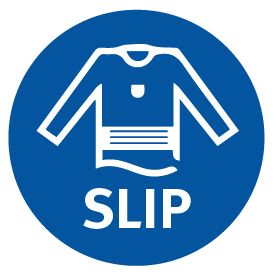Cancer
Breast cancer
Breast cancer is the most common cancer diagnosed among Queensland women. One out of every 7 women will be diagnosed with breast cancer in their lifetime.
Breast cancer is abnormal cell growth that occurs in breast tissue. There are different types of breast cancer — some that are slow growing and some that grow fast.
Treatment depends on the type of breast cancer. It’s not possible to tell which breast cancers will become life threatening if left untreated so all women diagnosed with breast cancer are offered treatment.
The rate of deaths from breast cancer has significantly decreased over the years and survival rates have dramatically improved. This is thought to be the result of early detection through breast cancer screening (which has the ability to detect breast cancer at a much smaller size), improvement in management and treatment and advances in drug therapy.
Breast cancer may occur at any age, but the risks are higher for women over 50. Most breast cancers (about 80%) occur in women over 50. If you have a strong family history of breast cancer you could also have an increased risk, however most breast cancers (95%) occur in women with no family history of breast cancer.
Symptoms and detection of breast cancer
Breast changes can be a sign or symptom of breast cancer but could also have other causes. Your doctor will be able to advise you.
Breast self-exams are not proven to be a good alternative to regular breast screens.
Breast changes that should be investigated by your doctor include:
- a new lump or lumpiness, especially if it’s only in one breast
- a change in the size or shape or your breast
- a change to the nipple such as crusting or redness, or the nipple is pulled in
- nipple discharge (liquid comes out of the nipple) that occurs without squeezing the nipple
- a change in the skin of your breast such as redness, puckering (pulling in) or dimpling (like orange peel)
- an unusual pain that doesn’t go away.
You should learn what your breasts normally look and feel like. There is no right or wrong way to do this.
In between breast screens, you should see your doctor if you notice any changes to the normal look and feel of your breasts. You should see your doctor even if the changes you notice aren’t on this list.
How to reduce your risk of breast cancer
There are many risk factors for breast cancer. Some are things you can't change and some you can.
Being female is the biggest risk factor for breast cancer. Only 1% of breast cancers occur in men. Age is the second biggest risk factor for breast cancer. Most breast cancers (about 80%) occur in women over 50.
There are some things that you can do to reduce your risk of breast cancer.
- Maintain a healthy body weight.
- Eat a healthy and balanced diet with a wide variety of food from all food groups. Increase your fruit and vegetable intake. Limit foods that are high in added fat, sugar and salt.
- Be active every day. Aim for at least 30 minutes of moderate intensity physical activity each day. Doing any physical activity is better than doing none.
- Limit alcohol consumption. Research has found that drinking alcohol increases your risk of breast cancer. The more you drink, the more your risk increases. If you choose to drink, have no more than one standard drink a day.
Other helpful information about breast cancer
- To make an appointment for a free breast screen call 13 20 50 (local call). You will be automatically connected to your nearest BreastScreen Queensland service centre.
- Find out about breast cancer screening and prevention
- Find out more about breast cancer from the Cancer Council Queensland.
Cervical cancer
Cervical cancer is one of the most preventable cancers with more than 90% of the most common form of cervical cancer preventable through regular cervical screening and HPV vaccination.
Cervical cancer involves changes to the cells of the cervix. The cervix is the lower part of the uterus (womb), which protrudes into the vagina. The cervix is sometimes called the neck of the womb.
Symptoms and detection of cervical cancer
Most women who develop cervical cancer have not had regular cervical screenings. Some types of the human papillomavirus (HPV)—a common sexually transmitted virus—have been linked to the development of cervical cancer, although most women with HPV will not develop cervical cancer.
If you are aged 25–74 years and have ever been sexually active, make sure you talk with your healthcare providers about having regular cervical screening test. This test is performed by your healthcare provider, or you can take your own cervical screening sample. Having a regular cervical screening test every 5 years is the best way to prevent cervical cancer.
The screening test detects HPV which a common virus that can lead to cell changes in the cervix. In rare cases these changes may lead to cervical cancer, but if found early, can be easily treated before cancer develops.
Most people will not know they have HPV as it doesn’t cause symptoms. In most people, the virus is cleared quickly by the immune system and no treatment is needed. If the infection doesn’t go away, there’s an increased risk of developing changes in the cervix. These changes usually develop slowly over many years.
If your cervical screening test shows you have HPV, your doctor or health care professional may recommend a colposcopy. A colposcopy involves a doctor using a special microscope called a colposcope to closely examine the cervix and determine whether further treatment is required.
How to reduce your risk of cervical cancer
When cervical cancer develops, human papillomavirus (HPV) is found in almost all cases but most people with HPV will not develop cervical cancer. You can reduce your risk of cervical cancer by:
- being vaccinated for human papillomavirus (HPV)
- having regular cervical screening tests
- not smoking.
Other helpful information about cervical cancer:
- Find your nearest cervical screening test provider from Women's Health Queensland—phone 07 3839 9988 or 1800 017 676 (outside Brisbane only).
- Find out about cervical screening and prevention.
- Find out more about cervical screening and the National Cervical Screening Program.
- Find out more about cervical cancer from the Cancer Council Queensland.
Ovarian cancer
Ovarian cancer is a malignant tumour in 1 or both ovaries. The incidence of ovarian cancer increases with age and is most common in women who have experienced menopause. However, it can affect women of all ages.
Symptoms and detection of ovarian cancer
It can be difficult to diagnose ovarian cancer in the early stages of the disease as the symptoms can be the same as those of less serious conditions such as irritable bowel syndrome (IBS) or pre-menstrual syndrome (PMS). However, the most common symptoms are:
- abdominal bloating/feeling full
- abdominal, pelvic or back pain
- appetite loss or feeling full quickly
- changes in bowel habits
- unexplained weight loss or weight gain
- indigestion or heartburn
- fatigue.
If any of these symptoms are unusual for you, and they persist over a long period, it's important to see your doctor. You can keep a symptom diary to monitor your symptoms and take the diary to your doctor.
Risk factors for ovarian cancer
There is not a known cause of ovarian cancer but you could be more at risk if you:
- have experienced menopause or are over 50 years
- have a family history of the disease
- have a gene mutation in the genes BRCA1 or BRCA2
- are of Northern European or Ashkenazi Jewish descent
- are childless, infertile or had your first child after 30
- have never taken oral contraceptives
- had early onset of periods (under 12 years) and late menopause
- have a medical condition like endometriosis
- smoke
- eat a high fat diet or are overweight or obese.
Other helpful information about ovarian cancer:
- For more information about ovarian cancer including causes, symptoms, diagnosis and treatment visit healthdirect.
- Find out more about ovarian cancer from the Cancer Council.
- Get information and support from Ovarian Cancer Australia.
Lung cancer
Lung cancer is the 4th most common cancer in Queensland, but the most common cause of cancer death. It is more common in people over 55 years.
There are different types of lung cancer, named by the type of cell affected. There are 2 main types: small cell carcinomas and non-small cell carcinomas. Lung cancers usually start in the cells lining the airways.
Symptoms and detection of lung cancer
There is no routine screening test for lung cancer. Several tests may be performed to confirm a diagnosis of lung cancer, such as a physical examination, imaging or biopsy.
Speak with your doctor if you notice any of the following:
- symptoms related to the lungs:
- shortness of breath
- wheezing
- chest pain
- cough which can produce blood stained sputum.
- general symptoms:
- weight loss
- lethargy
- loss of appetite.
How to reduce your risk of lung cancer
The leading risk factor for lung cancer is tobacco smoking, causing an estimated 81% of cancer in Queensland. It is now well known that there is no safe level of smoking and that exposure to passive smoking is also harmful to health, particularly of children.
There are many benefits to quitting smoking, from improved health to saving money. But what you may not know is:
- 3 months after quitting, your lung function and circulation improves
- 1 year after quitting, your risk of coronary heart disease is halved compared to continuing smokers
- 10 years after quitting, the chances of dying from lung cancer is about half that of a continuing smoker, and will further decrease. Risk of cancers of the bladder, kidney and pancreas also decrease
- 15 years after quitting, the risk of heart disease and risk of death is about the same as for those who have never smoked.
Other helpful information about lung cancer
- Find out more about smoking and how to quit.
- Find out more about lung cancer from the Cancer Council.
Bowel cancer
Bowel cancer is cancer in any part of the large bowel (colon or rectum). It is a common cancer among both women and men with 1 in 21 women developing bowel cancer before the age of 85. Bowel cancer is one of the most preventable cancers and if detected early can be successfully treated.
Symptoms and detection of bowel cancer
Although you may not notice any signs or symptoms, it is important to see your doctor if you notice blood in the toilet or in your poo, any changes to your regular bowel habits, have unexplained tiredness, or have persistent or unusual abdominal pain as these all could be signs of bowel cancer.
Screening is an effective method of detecting bowel cancer early but is only appropriate for people who do not have any symptoms. People aged 50–74 years are eligible for the National Bowel Cancer Screening Program and will receive a bowel cancer screening kit by mail. The test detects changes traces of blood in your poo, leaked from changing tissue in the bowel that may require further investigation.
If the result of the screening test is positive or if you have symptoms, your doctor may recommend you for further testing such as a colonoscopy. A colonoscopy involves an examination, usually under sedation, of your entire large bowel using a long, flexible tube with an attached camera. You will need to drink a liquid that will make you poo a lot to empty your bowels so that the lining is clean and easily seen using the camera. You will not be able to drive afterwards and will need someone to stay with you that night.
How to reduce your risk of bowel cancer
The best way to reduce your risk of bowel cancer is to:
- be physically active
- achieve and maintain a healthy body weight
- limit alcohol intake
- avoid smoking
- limit your intake of red or processed meat
- eat a healthy and balanced diet with plenty of fruit and vegetables
- participate regularly in bowel cancer screening.
Other helpful information about bowel cancer
- Find out about bowel cancer screening and prevention.
- Find out more about the National Bowel Cancer Screening Program.
- Find out more about bowel cancer from the Cancer Council Queensland.
Skin cancer
Skin cancer is common. Australia has the highest rate of skin cancer in the world, and Queensland has the highest rate in Australia. Queensland’s climate encourages an outdoor lifestyle, but exposure to the sun comes with risks. Skin damage can occur after 10 minutes of sun exposure when the ultraviolet (UV) index is at 3 or above. In Queensland the UV index is 3 or above all year round, even in winter.
Skin cancer is preventable. The key prevention messages for Queenslanders are protection from the sun and early detection are the best ways to reduce the risk of skin cancer.
 Slip on a shirt
Slip on a shirt
Wear a shirt that:
- provides a good level of skin coverage, including a collar and long sleeves
- is made from closely woven fabric in a dark colour (dark colours absorb UV radiation) and has an ultraviolet protection factor (UPF).
 Slop on sunscreen
Slop on sunscreen
Make applying sunscreen part of your everyday morning routine. Choose a sunscreen that is:
- broad-spectrum
- water-resistant
- sun protection factor (SPF) of at least 50
- not passed its used-by date.
 Slap on a hat
Slap on a hat
Choose a hat that shades the face, ears and neck, such as:
- a broad-brimmed hat
- legionnaire-style
- bucket hat.
Caps and visors are not recommended as they don’t offer enough sun protection for the face, ears and neck.
 Seek shade
Seek shade
When outdoors, on sunny or cloudy days, take cover:
- under trees or buildings
- under an umbrella or another portable shade structure.
 Slide on sunglasses
Slide on sunglasses
Choose sunglasses that:
- meet the Australian standards and have an eye protection factor (EPF) of 9 or 10
- cover the side of the eye area and fit closely to the face.
Most skin cancers can be successfully treated if they are found early. Without treatment some cancers can be deadly. Know your skin, check it regularly and if you notice a change in size, shape or colour to any spots or moles on your skin, have them checked by your doctor.


